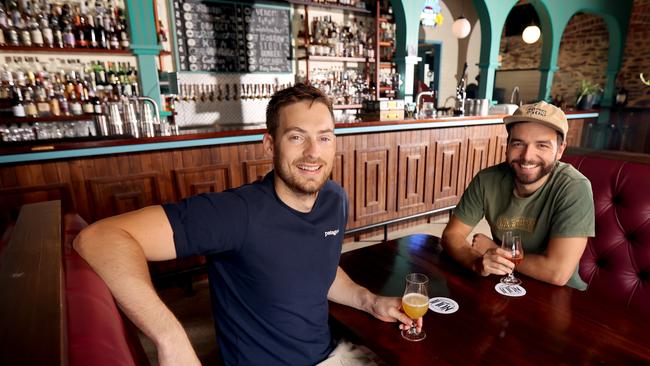Surge in job vacancies running ahead of employers’ capacity
The demand for hospitality workers reveals the strength of expansion and could lead to wage pressures.

Beverage industries meet the Beveridge curve.
In economics, the latter plots the relationship between job vacancies and unemployment.
Right now, the curve has been pushed well beyond its typical frontier as a record high job vacancy rate of 2.2 per cent in February coincided with an unemployment rate of 5.8 per cent (the jobless rate eased to 5.6 per cent last month).
According to University of Melbourne economist Jeff Borland, demand for workers is running faster than the capacity of employers to hire them.
“Having high vacancy and unemployment rates together shows a labour market that is struggling to keep pace with the speed of recovery,” Borland told The Australian.
“In the 10 months since last May, employment has increased by 950,000, or almost 8 per cent. We have never seen that rate of growth before. It is taking time for hiring to catch up.
“When that happens, we should see both vacancies and unemployment decline.”
That shift could set a little fire under wages and inflation, and see the Reserve Bank adjust the dial up on interest rates sooner than the 2024 forward guidance it has in place.
The epicentre of the mismatch is the accommodation and food industry, which took a battering in the March and June quarters last year under COVID-19 lockdowns. The number of vacancies in hospitality increased by 88 per cent in the year to February, compared with construction (61 per cent) and rental, hiring and real estate services (44 per cent), the other booming areas of demand.
Across the nation, vacancies rose by 27 per cent in the past year.
One of the reasons for the spike in vacancies in the accommodation and food industry is the plunge in the number of international students and temporary foreign workers, who returned home when the pandemic hit.
Yet it doesn’t explain the whole shift in the Beveridge curve, which reflects a jump in vacancies across all industries.
“Hospitality has been hit by the double whammy of rapid growth in employment, 96,000 or 35 per cent since last May, and the disappearance of short-term migrants, who prior to COVID-19 made up 15 per cent of the workforce,” says Borland.
He has two explanations for what’s behind the upward movement of the Beveridge curve. First, the shift is consistent with rapid changes to economic activity. We saw this last year when COVID-19 hit the economy like a meteor: job vacancies plummeted, unemployment soared. We’re now seeing the reverse.
Second, the movement may reflect a decline in so-called “matching efficiency”, or the speed with which jobseekers are matched to opportunities. Borland favours the first explanation.
He calculates if the vacancy rate returned to its average level over 2019 of 1.7 per cent, rather than 2.2 per cent (the highest since 1979), that would have seen another 65,600 people in work last month, assuming all jobs were taken by people not employed.
Drawing on Borland’s analysis, ANZ Bank senior economist Catherine Birch believes there is an “upside risk” risk to labour market improvements and wage growth and, ultimately, inflation, for both the bank’s and RBA’s outlook. “If this eventuates, it will have implications for the timing and speed of RBA policy changes, particularly around the timing of cash rate hikes but also, in the near term, around decisions to extend quantitative easing and yield curve control,” Birch writes in a note to clients.
ANZ expects a 0.9 per cent rise in the CPI in the March quarter, taking the annual headline rate of inflation to 1.4 per cent.




To join the conversation, please log in. Don't have an account? Register
Join the conversation, you are commenting as Logout